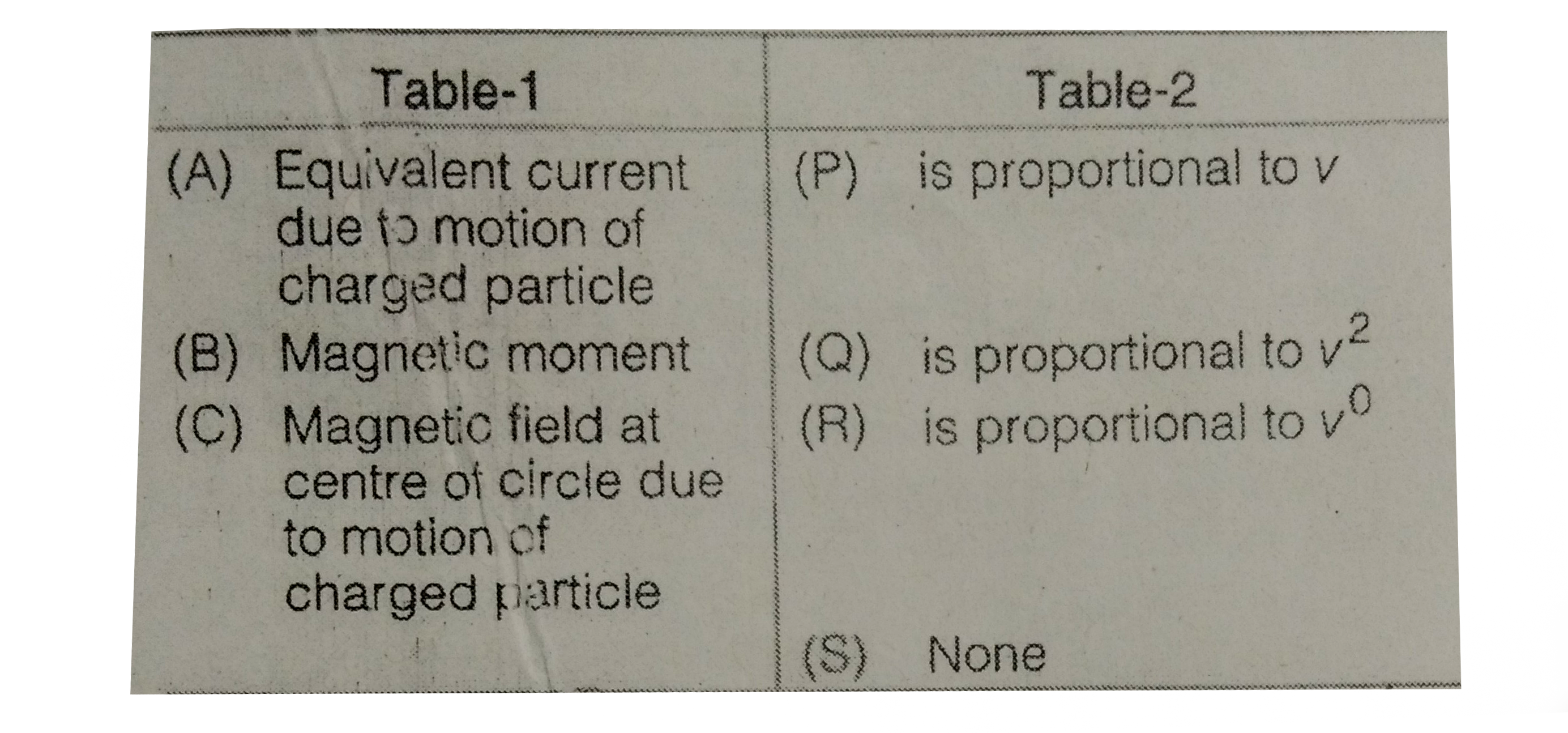The time period of a charged particle undergoing a circular motion in a uniform magnetic field is independent of its
A
speed
B
mass
C
charge
D
magnetic induction
Video Solution
Text Solution
The correct Answer is:A
KEY CONCEPT : The time period of a charged particle (m,q) moving in a magnetic field (B) is T=2πmqB
The time period does not depend on the speed of the particle.
|
Topper's Solved these Questions
- MOVING CHARGES AND MAGNETISMBOOK - SUNIL BATRA (41 YEARS IITJEE PHYSICS)CHAPTER - MOVING CHARGES AND MAGNETISMEXERCISE - MCQs(d )
1 Videos
- MODERN PHYSICSBOOK - SUNIL BATRA (41 YEARS IITJEE PHYSICS)CHAPTER - MODERN PHYSICSEXERCISE - MCQ (One Correct Answer
1 Videos
- RAY AND WAVE OPTICSBOOK - SUNIL BATRA (41 YEARS IITJEE PHYSICS)CHAPTER - RAY AND WAVE OPTICSEXERCISE - JEE Main And Advanced
209 Videos
Similar Questions
Knowledge Check
The time-period of a charged particle undergoing a circular motion in a uniform magnetic field in independent of its
AspeedBchargeCmassDmagnetic inductionIf a charged particle enters perpendicular in the uniform magnetic field then
AEnergy remains constant but moment changesBEnergy and momentum both remains constantCMomentum remains constant but energy changesDNeither energy nor momentum remains constantThe ratio of periods of α-particle and proton moving on circular path in uniform magnetic field is _______.
A2:1B1:2C4:1D1:4
Force on charge due to Magnetic field | Circular motion of charge in uniform magnetic field
View SolutionMotion of a charged particle in a uniform magnetic field |Questions
View SolutionThe path executed by a charged particle, whose motion is perpendicular to a uniform megnetic field, is
View SolutionIf a charged particle is a plane perpendicular to a uniform magnetic field with a time period T Then
View SolutionAssertion A charged particle is rotating in a circular path in uniform magnetic field. Then, plane of circle is perpendicular to the magnetic field.
Reason Circular motion is a two-dimensional motion.
View Solution

